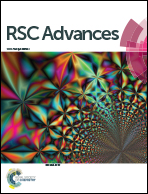Novel polyamide thin-film composite nanofiltration membrane modified with poly(amidoamine) and SiO2 gel
Abstract
Recently, poly(amidoamine) (PAMAM) has emerged as a novel material due to its high density of functional groups, hyper-branched structure and hydrophilic nature. PAMAM has been used as a monomer during an interfacial polymerization process for the fabrication of nanofiltration membranes. Previous work has focused on the low generation of PAMAM (G0, G1 and G2), however, the high generation of PAMAM (G4 and G5) still lacks investigation. This work focuses on the preparation of nanofiltration membranes, which are made of PAMAM–NH2 G4 and PAMAM–NH2 G5. By optimizing the concentration of PIP and SiO2 gel in the aqueous solution, the pure water flux improved by 106% while separation properties are kept at the same level. XPS, EDS, SEM, AFM and contact angle were used to characterize the NF membrane properties. The PAMAM/PIP/SiO2 membrane prepared under the optimum conditions exhibited a pure water flux of 38.5 L m−2 h−1 and Na2SO4 rejection of 92.0% under 0.6 MPa. The PAMAM/PIP/SiO2 membrane’s robust long-time running performance showed its good potential in practical applications.


 Please wait while we load your content...
Please wait while we load your content...